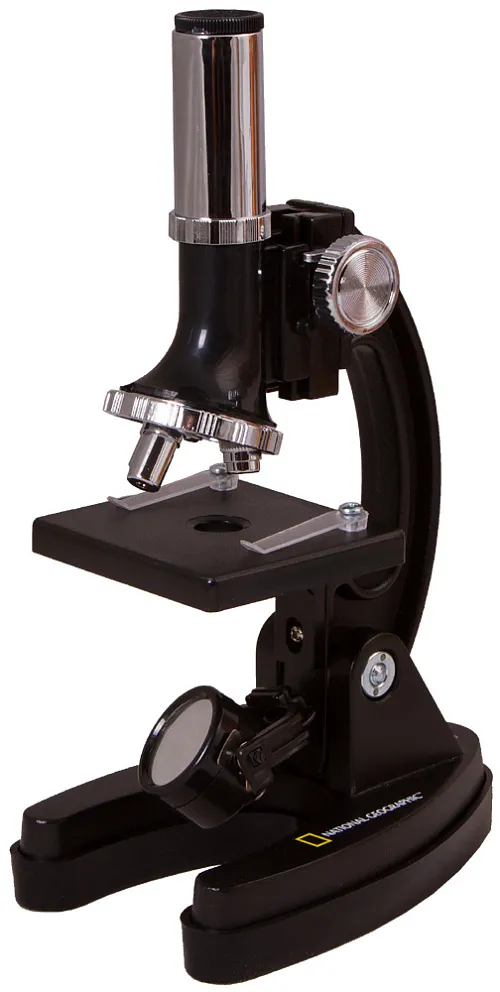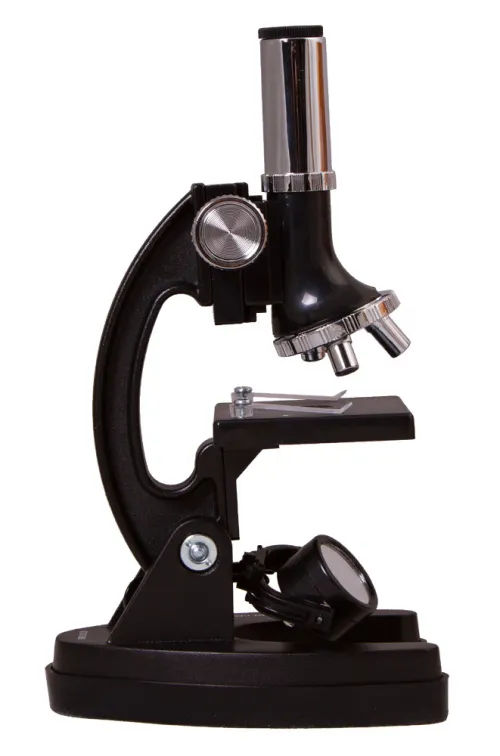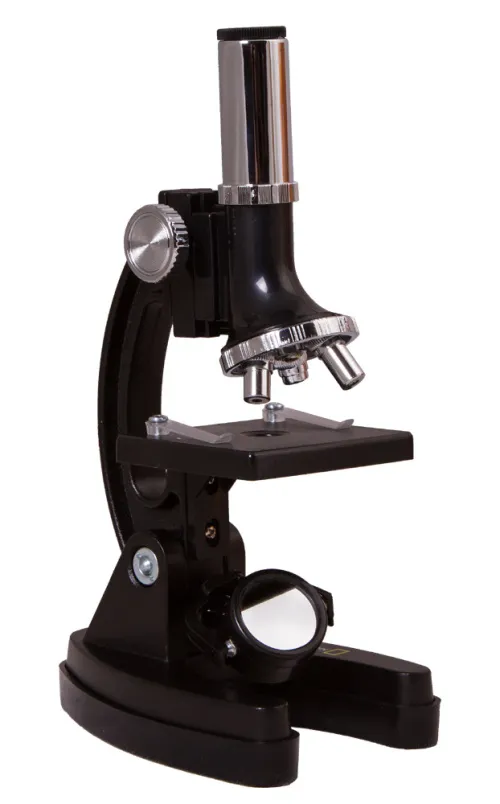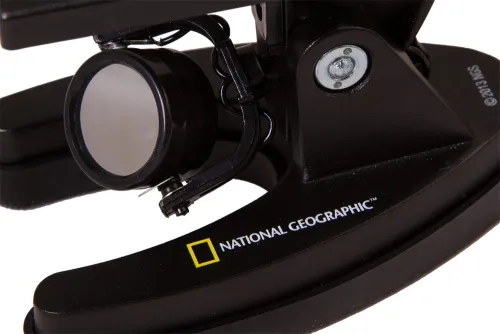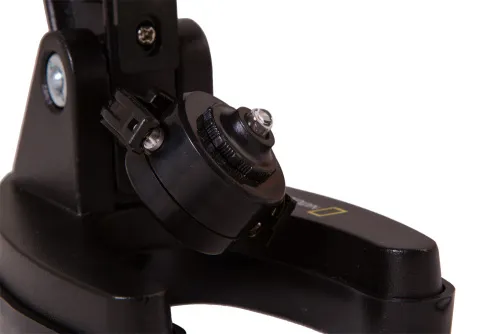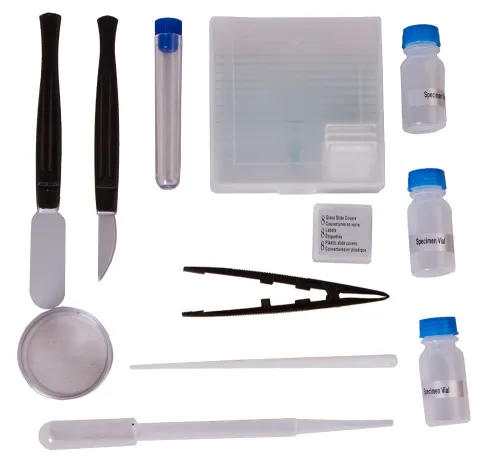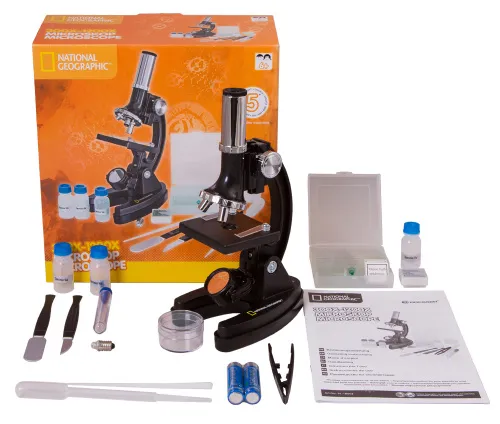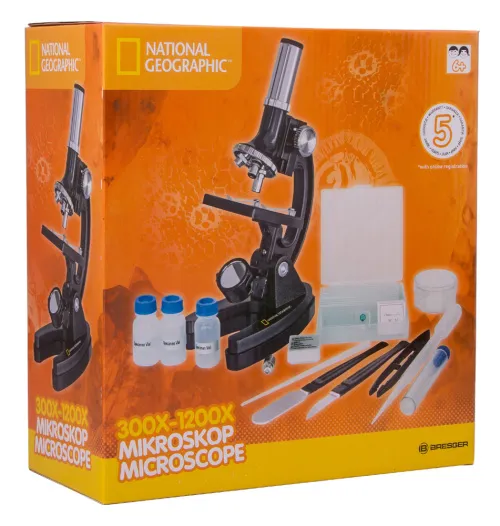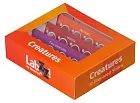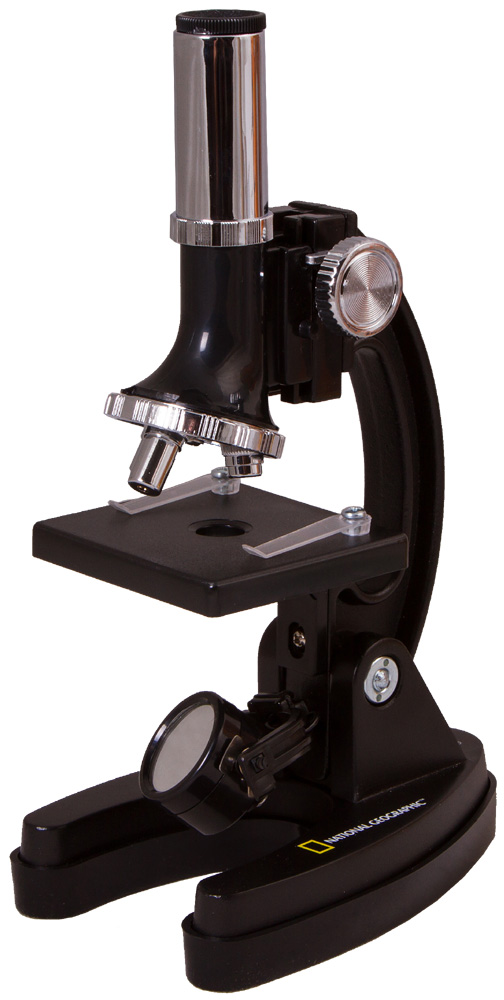Bresser National Geographic 300–1200x Microscope
Microscope for kids. Experiment kit included. For studying samples in transmitted light. Magnification: 300–1200х
| Product ID | 69362 |
| Brand | Bresser GmbH, Germany |
| Warranty | 2 years |
| EAN | 4007922003733 |
| Package size (LxWxH) | 24x23x10 cm |
| Shipping Weight | 0.84 kg |
Bresser National Geographic 300–1200x Microscope is a great instrument for an immediate start in studying the mysterious micro world. With this microscope young scientists will take their first steps in science. The kit contains everything you might need: ready-to-use microscope slides, tools for preparing your own samples, empty vials, instruments for work with the microscope, a user guide with useful information about the microscope’s construction, and description of interesting experiments you can conduct with this instrument.
The microscope features a monocular head and a revolving nosepiece with three objectives that provide three fixed magnifications: 300x, 600x, and 1200x. The device is equipped with built-in lower illumination that allows for observations of transparent microscope samples in transmitted light. For example, you can observe microorganisms in a drop of aquarium water or study the cellular structure of an onion peel. The illuminator is rotatable – one side has a mirror (used in sufficient daytime lighting), and the other side has a light diode.
Features:
- Built-in illumination
- Magnification up to 1200x
- For observations in transmitted light
- Many useful accessories included
The kit includes:
- Bresser National Geographic 300–1200x Microscope
- Objectives with three fixed magnifications: 300х, 600х и 1200х
- Instruments: forceps, dropper, spatula, dissecting knife and needle
- 8 blank slides and 8 cover slips
- 5 flasks of 3 types
- 3 ready-to-use specimens
- CR2032 battery - 1 pc.
- 1 extra bulb
- User manual
| Product ID | 69362 |
| Brand | Bresser GmbH, Germany |
| Warranty | 2 years |
| EAN | 4007922003733 |
| Package size (LxWxH) | 24x23x10 cm |
| Shipping Weight | 0.84 kg |
| Type | biological, light/optical |
| Microscope head type | monocular |
| Optics material | optical glass |
| Magnification, x | 300 — 1200 |
| Revolving nosepiece | for 3 objectives |
| Focus | coarse |
| Illumination | mirror, LED |
| Power supply | CR2032 battery (3V) – 1 pc. |
| User level | elementary |
| Application | elementary, school/educational |
| Illumination location | lower |
| Research method | bright field |
| Experiment kit included | ✓ |
We have gathered answers to the most frequently asked questions to help you sort things out
Find out why studying eyes under a microscope is entertaining; how insects’ and arachnids’ eyes differ and what the best way is to observe such an interesting specimen
Read this review to learn how to observe human hair, what different hair looks like under a microscope and what magnification is required for observations
Learn what a numerical aperture is and how to choose a suitable objective lens for your microscope here
Learn what a spider looks like under microscope, when the best time is to take photos of it, how to study it properly at magnification and more interesting facts about observing insects and arachnids
This review for beginner explorers of the micro world introduces you to the optical, illuminating and mechanical parts of a microscope and their functions
Short article about Paramecium caudatum - a microorganism that is interesting to observe through any microscope

